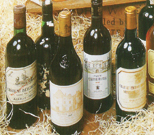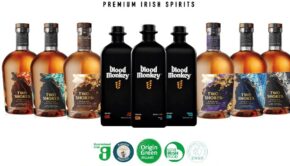Alcohol in wines: less is more?

Rising alcohol levels are a concern for us all as we attempt to curb consumption but does less mean more where wine is concerned?
27 August 2008
Although climate change has often been cited as the chief reason for the increase in wine alcohol levels, improved winemaking has been at least as significant. Skilled selection of grape clones, effective matching of grape to vineyard site, better timed harvesting, a reduction in grape viruses, temperature controlled and closed fermentation tanks, and yeasts that are more efficient at converting sugars to alcohol. All have contributed to a sea change in wine quality over the past 15 years and the increase in alcohol levels is a partly unwanted by-product.
Recently supermarkets have begun to listen to plaintive cries from consumers and are now attempting to give us what we say we want. Thus we have begun to see Australian Shiraz and Chardonnay on our shelves at around 9% alcohol. It is safe to assume that many of these wines have been technically manipulated. One common method is reverse osmosis, a membrane filter system which separates out water, alcohol and other molecules, allowing the mix to be returned to the wine with some of the alcohol distilled out.
Another popular technique is the spinning cone which siphons off volatile components including alcohol and then splits them up, allowing some alcohol to be removed. Both technologies can involve outsourcing the process by the winery. In the US, around 10 to 15% of a wine is typically sent for treatment.
Losing more than alcohol
Many experts believe that if a wine is technologically reduced in alcohol by more than a percentage point or so, the vinous qualities are reduced. Given that even slight temperature variations while wine is in storage can lead to impaired quality, it’s hard not to believe that such strongly physical manipulations of wine would not have some effect on character. It also offends those who want their food products to be processed as naturally as possible.
There are other ways of reducing alcohol. Harvesting can take place earlier so there is not quite so much sugar in the grapes, picking in stages as sugar levels rise and then blending the mix. Winemakers can choose a yeast which uses up more grape sugar per 1% of alcohol, and several of these are in advanced development. With red wines, using more open top fermentation allows some of the alcohol to evaporate, and more whites can be produced from varieties which tend toward lower levels of alcohol.

Bordeaux red has generally been 12.5 per cent alcohol but over the last couple of years some wines are reaching 13 to 13.5 per cent
After that, customers have to be educated to understand that methods like these which do not compromise quality will only reduce alcohol levels by a couple of points at best and that they should choose wines according to the appropriate alcohol level for different occasions. If they want something with less than 9% alcohol, they might be better off with a beer – unless it’s a Mosel Riesling, of course.
A look at the light side
There is a cheaper way than manipulation to reduce alcohol and that is to reduce wine concentration by increasing grape yields. It would be a tragedy for those in the trade who have worked hard to increase wine standards if the demand for lower alcohol became an excuse for some producers and supermarkets to encourage overcropping of vines and reduce quality along with the alcohol.
The good news is that consumers can reduce their intake of alcohol while still drinking good wine: simply look for wines in which alcohol is moderate because of its grape variety, climate or harvest timing.



 Print
Print






Fans 0
Followers